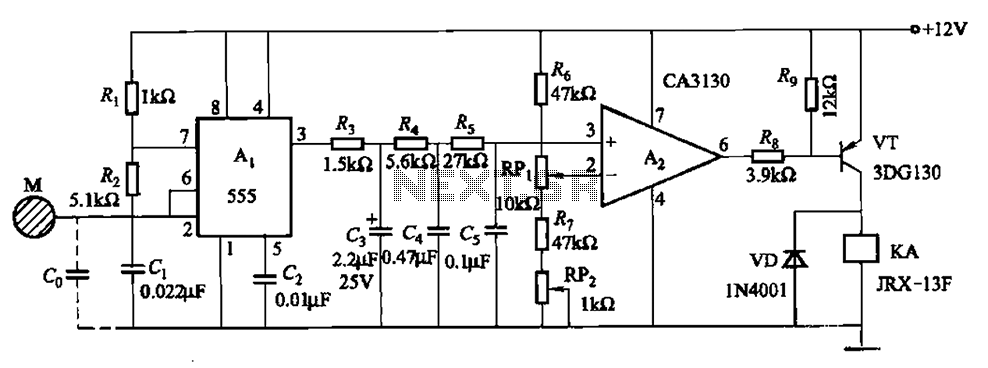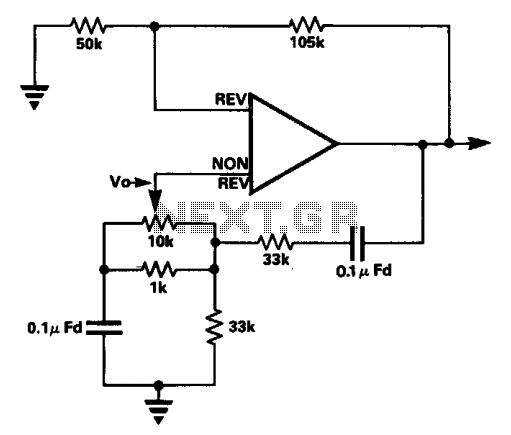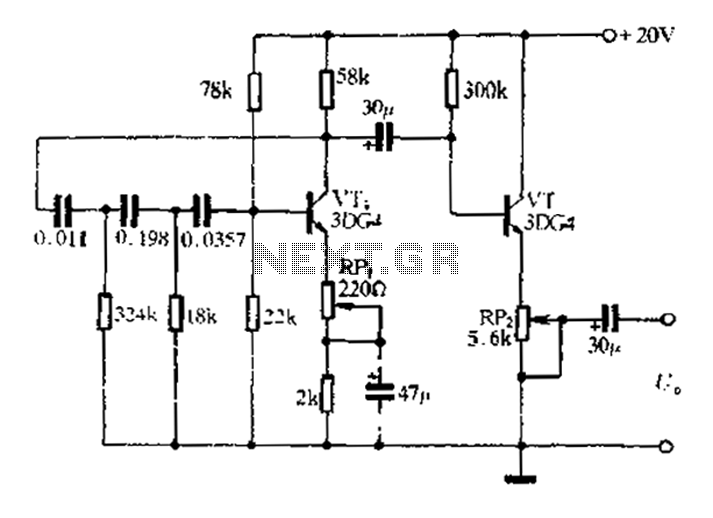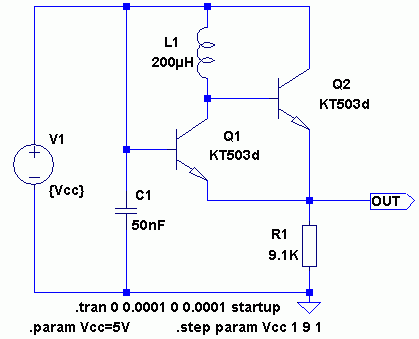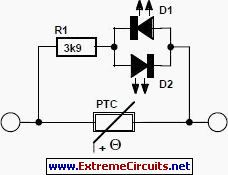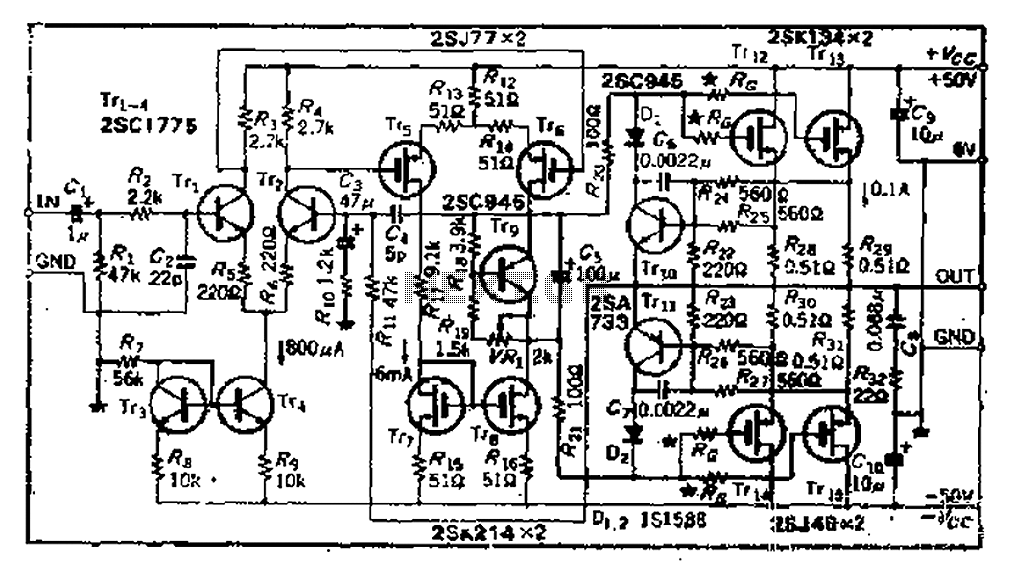
Simple variable frequency oscillator
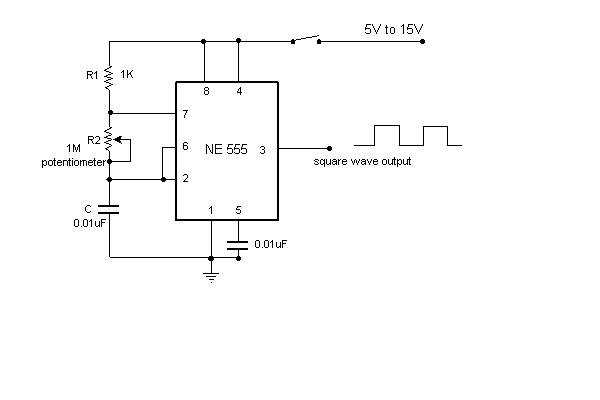
A simple variable frequency oscillator utilizing a 555 timer IC to generate a square wave frequency that can be adjusted using a potentiometer.
The circuit operates primarily on the principles of astable multivibrator configuration using the 555 timer IC, which is a versatile and widely used component in electronic applications. In this setup, the 555 timer is configured to oscillate between high and low states, producing a square wave output. The frequency of this output can be varied by adjusting a potentiometer connected to the timing components of the circuit.
The essential components of the circuit include the 555 timer IC, a resistor (R1), a potentiometer (R2), and a capacitor (C1). The values of R1 and R2, along with the capacitance of C1, determine the frequency of oscillation according to the formula:
\[ f = \frac{1.44}{(R1 + 2R2) \cdot C1} \]
where:
- \( f \) is the frequency in hertz (Hz),
- \( R1 \) is the resistance in ohms (Ω),
- \( R2 \) is the resistance of the potentiometer in ohms (Ω),
- \( C1 \) is the capacitance in farads (F).
To construct the circuit, the following steps should be followed:
1. Connect pin 1 of the 555 timer to ground.
2. Connect pin 8 to the positive supply voltage (typically between 4.5V to 15V).
3. Connect R1 between pin 7 (discharge) and pin 8 (Vcc).
4. Connect the potentiometer (R2) between pin 7 and pin 6 (threshold).
5. Connect pin 6 to pin 2 (trigger).
6. Connect a capacitor (C1) between pin 2 and ground.
7. Connect pin 3 (output) to the output load or measurement device.
By adjusting the potentiometer, the resistance value changes, thus altering the timing interval and consequently the frequency of the square wave output. This circuit can be used in various applications, including tone generation, frequency modulation, and as a clock pulse generator for digital circuits. The simplicity and adjustability of this variable frequency oscillator make it a valuable tool in both educational and practical electronic projects.Simple variable frequency oscillator. This is a very simple circuit utilising a 555 timer IC to generate square wave of frequency that can be adjusted by a potentiometer. With values given. 🔗 External reference
The circuit operates primarily on the principles of astable multivibrator configuration using the 555 timer IC, which is a versatile and widely used component in electronic applications. In this setup, the 555 timer is configured to oscillate between high and low states, producing a square wave output. The frequency of this output can be varied by adjusting a potentiometer connected to the timing components of the circuit.
The essential components of the circuit include the 555 timer IC, a resistor (R1), a potentiometer (R2), and a capacitor (C1). The values of R1 and R2, along with the capacitance of C1, determine the frequency of oscillation according to the formula:
\[ f = \frac{1.44}{(R1 + 2R2) \cdot C1} \]
where:
- \( f \) is the frequency in hertz (Hz),
- \( R1 \) is the resistance in ohms (Ω),
- \( R2 \) is the resistance of the potentiometer in ohms (Ω),
- \( C1 \) is the capacitance in farads (F).
To construct the circuit, the following steps should be followed:
1. Connect pin 1 of the 555 timer to ground.
2. Connect pin 8 to the positive supply voltage (typically between 4.5V to 15V).
3. Connect R1 between pin 7 (discharge) and pin 8 (Vcc).
4. Connect the potentiometer (R2) between pin 7 and pin 6 (threshold).
5. Connect pin 6 to pin 2 (trigger).
6. Connect a capacitor (C1) between pin 2 and ground.
7. Connect pin 3 (output) to the output load or measurement device.
By adjusting the potentiometer, the resistance value changes, thus altering the timing interval and consequently the frequency of the square wave output. This circuit can be used in various applications, including tone generation, frequency modulation, and as a clock pulse generator for digital circuits. The simplicity and adjustability of this variable frequency oscillator make it a valuable tool in both educational and practical electronic projects.Simple variable frequency oscillator. This is a very simple circuit utilising a 555 timer IC to generate square wave of frequency that can be adjusted by a potentiometer. With values given. 🔗 External reference
Warning: include(partials/cookie-banner.php): Failed to open stream: Permission denied in /var/www/html/nextgr/view-circuit.php on line 713
Warning: include(): Failed opening 'partials/cookie-banner.php' for inclusion (include_path='.:/usr/share/php') in /var/www/html/nextgr/view-circuit.php on line 713
